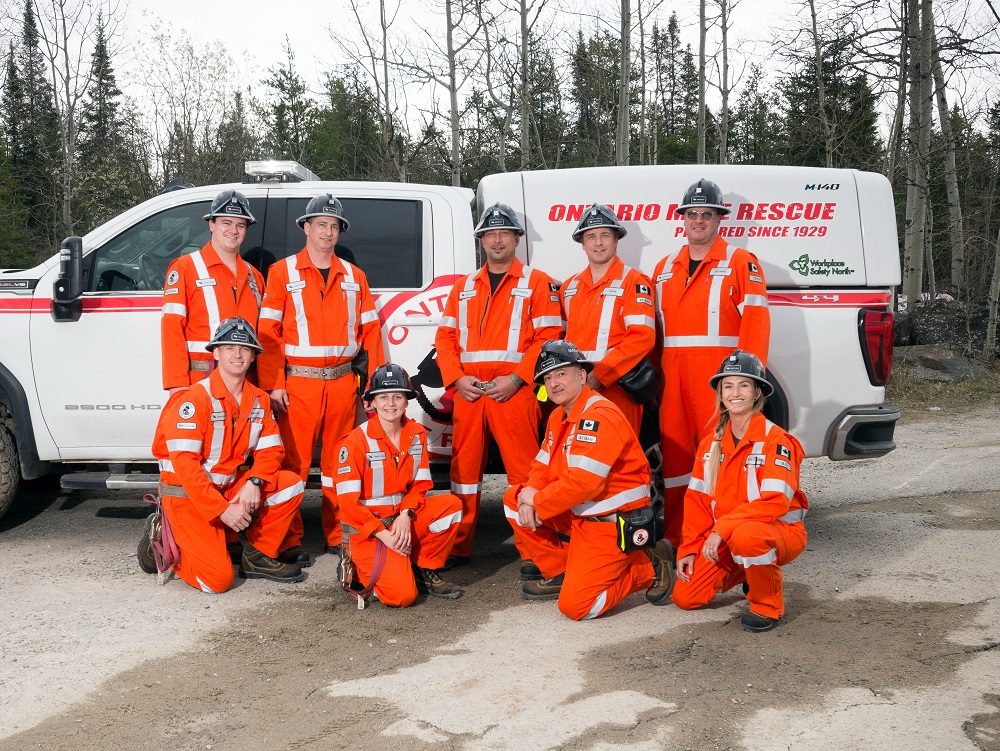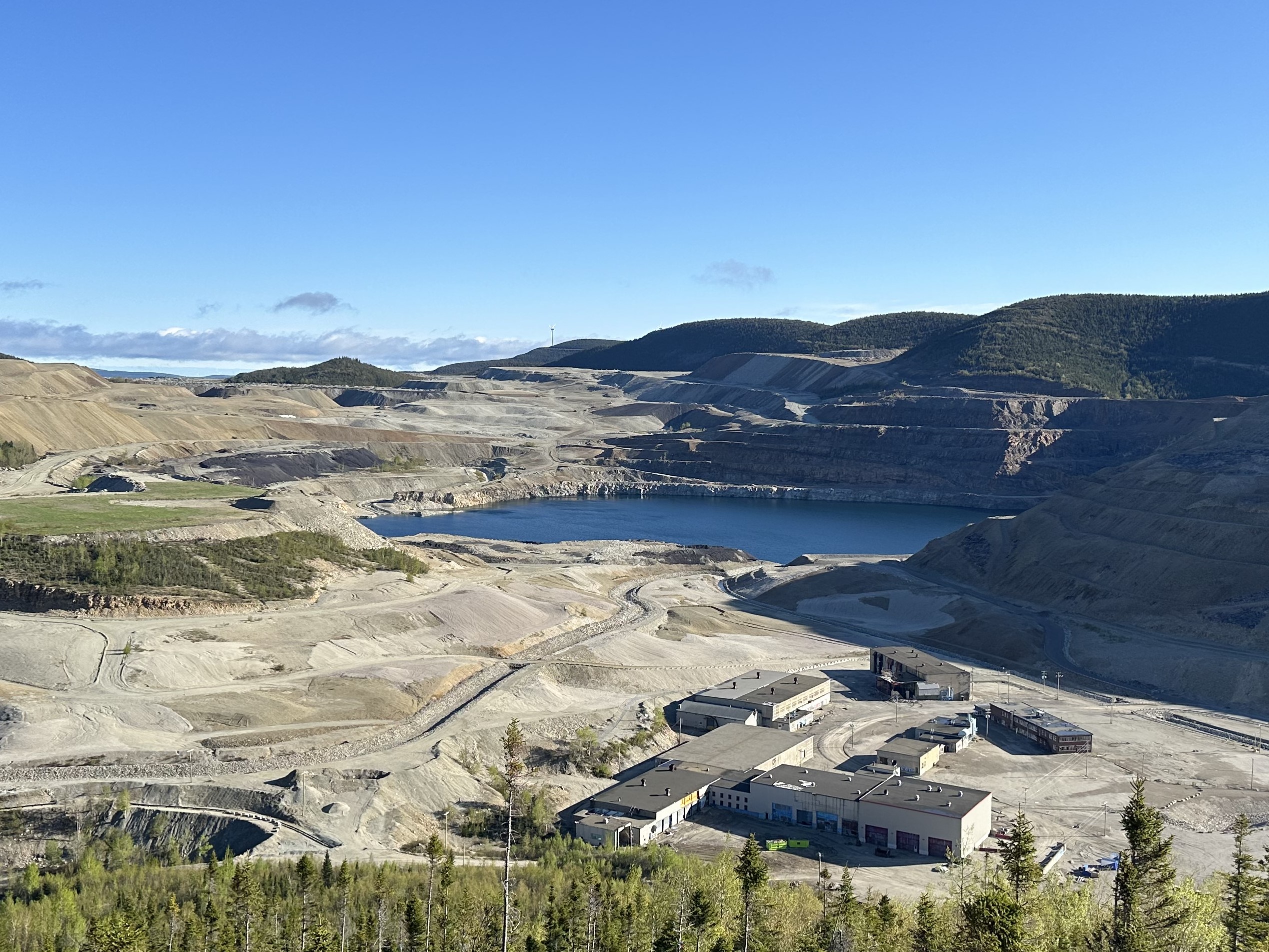SMR idea gets a reaction from miners

Small modular nuclear reactors (SMRs) aren’t new technology, but until now, they have been confined to military uses – nuclear subs and ice breakers.
New advances in the technology, however, could soon make them a viable option to power remote locations, including mining operations.
Those advances caught the attention of Diane Cameron, director of the nuclear energy division at Natural Resources Canada about five years ago.
“It was clear to me over the course of via last several years that a certain number of key breakthroughs were being made and a certain momentum globally was starting to form around the real possibility of near-term deployment of small modular reactors,” Cameron said in an interview in January.
After conversations with stakeholders in the nuclear industry and her counterparts internationally, Cameron realized that Canada was uniquely well placed to lead the SMR space – if it wanted to.
“In recognition of that and at the request of a number of stakeholders who came forward and said hey, this is a real opportunity for Canada and there’s a role for the federal government to play, we decided the time is right, we need to do our homework. This is all very new, we have a lot of questions, so let’s bring together a dialogue.”
NRCan invited interested parties – both provincial and territorial governments as well as Canadian power utilities – to participate, and over the course of eight months in 2018, produced an SMR roadmap addressing key questions.
A key finding of that work was that SMRs are real, with Russia already operating one, and other countries building or preparing to build prototypes. The report also found that Canada does have competitive advantages, including top-notch nuclear labs and R&D, and a regulator that can handle advances in technology such as SMRs.
“The international race is on and there will be significant first mover advantage,” Cameron said.
Mining connection
So where does mining come in? SMRs at this stage don’t even exist at the prototype stage – at least not in Canada.
To get there, the nuclear industry needs clients.
Heavy industry – both the oil and gas and mining sectors –have been identified as potential markets for the technology.
Because of its reliance on expensive diesel fuel at remote operations, the mining sector would be a natural first client, Cameron says, as opposed to oilsands operators, which have access to cheaper natural gas.
While miners were “cautiously interested” in the SMR idea in the year leading up to the release of the roadmap last fall, they wanted more information.
“In successive order, I would say the questions that we get from mining stakeholders are: when are these things going to be available? How much are they going to cost? And how do we deal with or build public confidence?” Cameron says.
Miners are more enthusiastic now that many of their initial questions have been answered in the SMR roadmap.
“When the roadmap was completed and published on the website in the first week of November, I had within one week about 20 different mining stakeholders – a combination of associations and companies emailing and calling me to say, ‘OK, we’re ready to talk.’”
In addition to industry consultations, workshops have been held in communities in the North, New Brunswick, Ontario, Saskatchewan and Alberta, including Indigenous communities.
Three markets
SMR refers to any nuclear reactor that generates less than 300 MW of electricity. But NRCan and the nuclear industry envision three size classes for three distinct markets.
The smallest SMRs would be designed for remote communities that now rely on diesel. (There are 200 of these communities in Canada. Some have expressed interest in SMRs, while others may not be interested, Cameron says.) The largest, about 150-300 MW would be for provinces and territories, with some governments looking to SMRs as a greenhouse gas emissions-free replacement for coal energy.
Heavy industry would use a mid-size of SMR – between 10 and 80 MW. Designs in this category could be modular, and also mobile, so they can be moved when they are no longer needed.
Refuelling, which might need to be done after 20 years could be done simply, by bringing a new fuel cylinder to site, or by taking the SMR offsite.
Advances in safety have been key to the viability of SMRs. The new designs all include inherent or passive safety features instead of active safety features, which rely on action from a person.
“What some of the SMRs do is flip that on its head – so you have to do something to keep the reaction going and if something goes wrong, literally hands off, and the laws of physics drive it to zero. So they automatically shut themselves down,” Cameron explains. “This is clearly something the market wants – if you can’t show me that this thing is going to shut itself off at the first sign of something going wrong, an earthquake or whatever – then I’m not interested.”
Although there’s no reason why a mining company could not decide to become an owner-operator of a nuclear reactor, the most likely business model is that a miner would buy combined heat and power and high-quality steam from a nuclear operator, Cameron says.
OPG, Bruce Power and New Brunswick Power are all assessing different designs for SMRs.
Waste from the reactors would be stored in the Deep Geological Repository for Nuclear Waste, when a site for the repository is chosen. (Four communities are still in the running for the repository, down from 26 that originally applied.)
Economics
The main reason mining companies are open to SMRs is economics.
“What I think we’re looking at is a huge, huge change in the mining industry in terms of the cost of electricity in the North,” says Vic Pakalnis, CEO of Mining Innovation Rehabilitation and Applied Research Corp. (Mirarco).
Pakalnis, an early proponent of the use of SMRs in mining, says they could cut the cost of energy for mines in half – or even more for Arctic sites.
“The savings would be material,” he says. “You could open up more mining projects to development because electricity costs are one of our big problems in mining.”
Mirarco announced last year that Bruce Power had agreed to provide $1 million over five years to fund a new position at the organization, and in December, Laurentian University professor Francois Caron was named as the Bruce Power Chair in Sustainable Energy Systems. One of Caron’s duties will be to examine the potential for SMRs in rural and remote regions, including mine sites.
“Mining companies are very, very positive on the idea, but most of them don’t want to be the first,” Pakalnis concedes.
Social licence
For the mining sector to say yes to SMRs, one or more designs will need to be tested at a federal lab and run for about five years to develop a track record.
Canadian Nuclear Laboratories is aiming to demonstrate at least one prototype by 2026.
Currently, there are about 150 SMR designs around the world. In Canada, about a dozen have started pre-licencing engagement with the regulator and four have advanced with detailed applications that have been submitted for serious consideration by Canadian Nuclear Labs (CNL).
Winning designs will have to be approved by the Canadian Nuclear Safety Commission (CNSC), be demonstrated at CNL, and lastly, will need to have a nuclear operator that wants to build and operate the design.
In terms of earning a social licencen to use SMRs in mining, miners have indicated it would take about five years to get a sufficient track record in order to deploy at Canadian mine sites, to build the information base about SMRs and to socialize the issue with their employees and with the surrounding communities at their sites.
In many cases, mining companies already have the relationships established to do this work, says Cameron, who is planning further outreach to miners this year through the Prospectors and DeveDevelopers Association of Canada convention, CIM and other trade shows.
“I think that the mechanisms and the pathways to build the public confidence that you need for deployment to a mining site is achievable in that five-year window.”
Of course, the first SMR sites would be chosen carefully, where communities are more comfortable with the technology and nuclear energy in general.
“In mining, as with nuclear, the end game is not some kind of national consensus where every Canadian is pro,” Cameron says. “It’s about community level engagement. It’s about the economics and the culture and the values community by community, project by project.”





Comments